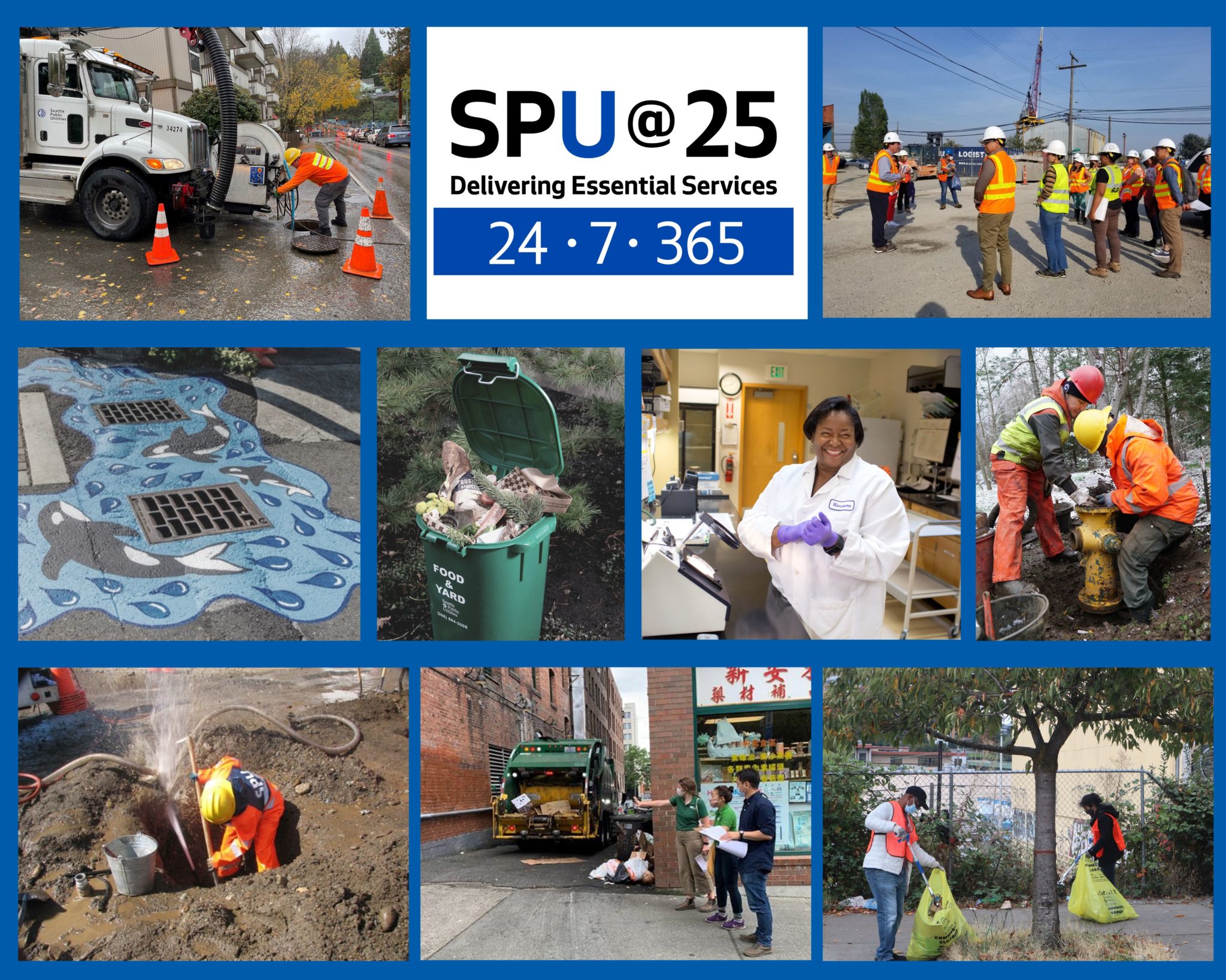
Much of the work at Seattle Public Utilities (SPU) goes back decades—as far back as the late 1800s—yet as one utility, it is this year we are celebrating our 25th anniversary. So how did it come to be? Prior to 1997, much of what is now SPU existed beneath the umbrella of the city’s longstanding Engineering Department. For many employees, the change in work structure offered new, welcome possibilities for collaboration and improved customer service. Over the next 25 years, staff focused on cohesively integrating operations, while the utility worked to understand and define its new identity.
“Within Engineering, there was a lot of excitement about becoming a public utility organization,” said Dr. Linda Paralez, a long-term consultant for SPU. Before the merger, she worked on operations within the Water Department. Many of the Engineering Department’s engineers liked the prospect of working with colleagues outside of their own group.
At that time, Drainage and Wastewater, Solid Waste, and Transportation all fell under the Engineering Department, with drinking water having its own, longstanding institution: the Water Department. Engineering and Water both date back to the early days of the City. Following the merger, the Engineering and Water Departments became Seattle Public Utilities, and the transportation division became a department of its own, SDOT.
“Engineering worried about a loss of influence,” Linda said. Employees within the department had to transition out of their old departments into a new identity within SPU. Furthermore, they had to figure out how operations would work within the new utility. The Water Department became a branch, and later a line of business within SPU. Would Water loom over the other areas, which had always been part of Engineering?
While SPU’s formation brought staff from different departments into a new organization, the goal-to deliver quality essential services-remain unchanged. Initially, SPU had to identify how operations would work within the new combined utility and tried consolidating them. But in order to be accountable to ratepayers, SPU ultimately deconsolidated and created three unique lines of business: Drainage and Wastewater, Solid Waste, and Water. Now, in addition to the three service-providing lines of business, SPU has several branches that work across lines of business, including the Project Delivery and Engineering Branch and three others: one for utility-wide management and initiatives, one focused on financial and risk management, and another centered around people and culture, including customer service, clean city, and human resources.
Starting with the 1997 merger, staff in the new utility began the difficult work of unifying to address the needs of the diverse communities that SPU serves. That work continues even today. By working together, SPU has increased standardization and improved safety across the lines of business.